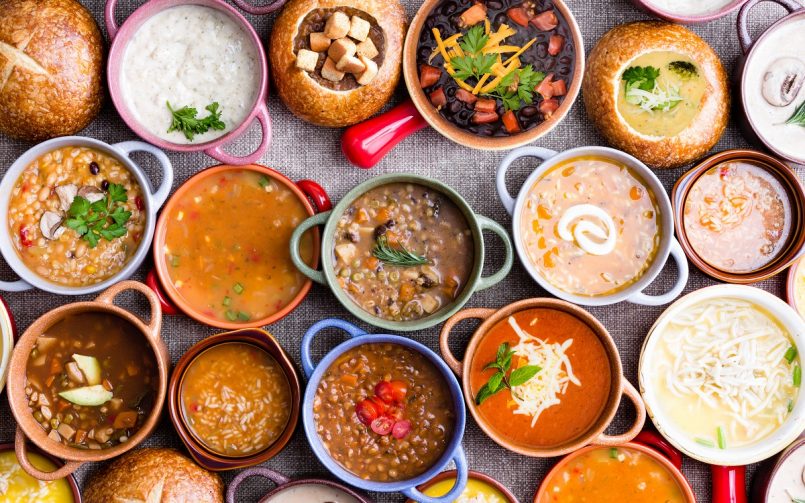Winter brings chilly weather and a desire for warm, comforting meals. It’s a season when your body craves nourishment and support to stay healthy and vibrant. Incorporating winter foods into your diet not only satisfies your taste buds but also provides essential nutrients, boosts immunity, and promotes overall well-being. In this article, we’ll explore the benefits of including winter foods in your diet, the top seasonal ingredients to embrace, tips for incorporating them into your meals, common myths surrounding winter foods, and more.
Benefits of Including Winter Foods in Your Diet
Boosting Immunity with Seasonal Produce
During winter, our immune system faces increased challenges due to the prevalence of colds and flu. Consuming seasonal fruits and vegetables rich in vitamins, wellhealthorganic-comto-increase-immunity-include-winter-foods-in-your-diet-health-tips-in-hindi, and antioxidants can strengthen your immune system and help fight off illnesses. Citrus fruits, such as oranges and grapefruits, are excellent sources of vitamin C, while dark leafy greens like kale and spinach provide a range of nutrients to support your immune system.
Providing Essential Nutrients
Winter foods offer a diverse array of essential nutrients that are beneficial for your health. Root vegetables like carrots, sweet potatoes, and beets are packed with vitamins, minerals, and fiber. They provide warmth, nourishment, and support digestion. Cruciferous vegetables such as broccoli and cauliflower are known for their detoxifying properties and are excellent sources of vitamins A, C, and K.
Supporting Weight Management
Maintaining a healthy weight can be a concern during the winter months, especially with the temptation of rich holiday foods. However, many winter foods are naturally low in calories and high in fiber, which helps you feel full and satisfied. Incorporating foods like Brussels sprouts, cabbage, and winter squash into your meals can contribute to a balanced diet and support your weight management goals.
Keeping Your Skin Healthy and Hydrated
Winter weather often leads to dry skin, making it essential to nourish and hydrate from within. Foods like avocados, walnuts, and flaxseeds provide healthy fats and omega-3 fatty acids that promote skin health and maintain moisture. Including these foods in your diet can help combat the dryness and keep your skin glowing throughout the season.
Aiding Digestion and Gut Health
Digestive issues can arise during winter, partly due to decreased physical activity and changes in eating habits. To support your digestive system and maintain gut health, focus on incorporating fiber-rich foods like whole grains, legumes, and winter vegetables into your meals. These foods aid digestion, prevent constipation, and keep your gut microbiome balanced.
Top Winter Foods to Include in Your Diet
:max_bytes(150000):strip_icc()/potato-and-cheddar-cheese-soup-hero-05-26e02392269d480b9e6decf24f7051a1.jpg)
To make the most of the winter season and its abundance of fresh produce, consider incorporating the following foods into your diet:
Root Vegetables for Nourishment and Warmth
Root vegetables like carrots, parsnips, and turnips are not only hearty and filling but also provide essential nutrients. They are rich in fiber, vitamins, and minerals, and their natural sweetness adds a comforting touch to your meals. Roasting or sautéing them with herbs and spices brings out their flavors and enhances their nutritional value.
Citrus Fruits for Vitamin C and Antioxidants
Citrus fruits are a winter staple that adds brightness to your diet while boosting your immune system. Oranges, grapefruits, and tangerines are excellent sources of wellhealthorganic-comto-increase-immunity-include-winter-foods-in-your-diet-health-tips-in-hindi, which helps protect against colds and flu. Additionally, they contain antioxidants that support overall health and combat inflammation.
Cruciferous Vegetables for Detoxification
Cruciferous vegetables like broccoli, cauliflower, and Brussels sprouts are not only delicious but also offer numerous health benefits. They are packed with vitamins, minerals, and antioxidants that help detoxify your body and protect against chronic diseases. Steaming or stir-frying them retains their nutrients while adding a delightful crunch to your meals.
Nuts and Seeds for Healthy Fats and Protein
Including a variety of nuts and seeds in your diet during winter provides healthy fats, protein, and essential minerals. Almonds, walnuts, and chia seeds are excellent choices that can be added to your breakfast bowls, salads, or homemade snacks. They provide sustained energy and promote satiety, making them a great addition to your winter diet.
Whole Grains for Sustained Energy
Whole grains like quinoa, oats, and brown rice are a nutritional powerhouse for winter. They provide complex carbohydrates, fiber, and essential nutrients to keep you energized throughout the day. Including whole grains in your meals helps regulate blood sugar levels, aids digestion, and supports overall well-being.
Soups and Stews for Comfort and Nutrition
Winter is the perfect time to savor hearty soups and stews that warm your body and soul. These dishes can be packed with seasonal vegetables, legumes, and lean proteins. Homemade soups and stews allow you to control the ingredients and experiment with flavors, ensuring a nutritious and satisfying meal.
Tips for Incorporating Winter Foods into Your Daily Meals
![]()
Incorporating winter foods into your daily meals doesn’t have to be complicated. Here are some tips to help you make the most of seasonal produce:
Experimenting with Seasonal Recipes
Take advantage of the variety of winter ingredients by trying out new recipes. Look for inspiration wellhealthorganic-comto-increase-immunity-include-winter-foods-in-your-diet-health-tips-in-hindi, in cookbooks, or even by talking to friends and family. By experimenting with different flavors and cooking techniques, you can discover exciting ways to enjoy winter foods and keep your meals interesting.
Meal Planning and Prepping
Plan your meals ahead of time to ensure you have the necessary ingredients on hand. This will help you stay organized and avoid relying on unhealthy convenience foods. Dedicate some time each week to meal prepping, such as washing and chopping vegetables or cooking a big batch of soup or stew. This way, you’ll have healthy options readily available, saving you time and effort during busy weekdays.
Exploring New Cooking Techniques
Winter foods lend themselves well to various cooking techniques. Roasting root vegetables brings out their natural sweetness, while steaming retains their nutrients and vibrant colors. Try grilling citrus fruits to caramelize their sugars or sautéing leafy greens with garlic and olive oil for a quick and nutritious side dish. Exploring new cooking techniques adds diversity to your meals and enhances the flavors of winter foods.
Trying Warm and Nourishing Beverages
In addition to meals, warm beverages play a comforting role during winter. Instead of reaching for sugary hot chocolate or coffee, consider healthier options like herbal wellhealthorganic-comto-increase-immunity-include-winter-foods-in-your-diet-health-tips-in-hindi, warm lemon water, or homemade vegetable broths. These beverages hydrate your body, provide antioxidants, and contribute to your overall well-being.
Incorporating Spices and Herbs
Spices and herbs not only add flavor to your dishes but also offer numerous health benefits. Ginger, turmeric, cinnamon, and cloves are known for their warming properties and anti-inflammatory effects. Sprinkle these spices in your soups, stews, or even hot beverages to boost the flavor and reap their potential health benefits.
Common Myths About Winter Foods

Despite the many benefits of including winter foods in your diet, some myths can confuse and discourage you from embracing them fully. Let’s debunk a few common myths:
Myth: Winter Foods Make You Gain Weight
It’s a common misconception that winter foods lead to weight gain. While some traditional holiday foods may be indulgent, the overall season offers an abundance of nutritious options. By focusing on whole foods and practicing portion control, you can enjoy the flavors of winter without compromising your weight management goals.
Myth: Only Fresh Produce Is Beneficial
Although fresh produce is ideal, it’s not the only option during winter. Frozen fruits and vegetables are a convenient and equally nutritious alternative. They are picked at their peak and immediately frozen, preserving their vitamins and minerals. Canned varieties, such as beans and tomatoes, can also be nutritious, but it’s essential to choose those without added sugars or preservatives.
Myth: Winter Foods Are Bland and Boring
Winter foods have a reputation for being bland and wellhealthorganic-comto-increase-immunity-include-winter-foods-in-your-diet-health-tips-in-hindi, but that couldn’t be further from the truth. With a little creativity, you can transform simple ingredients into delicious and satisfying meals. Experiment with different flavors, spices, and cooking techniques to make your winter dishes exciting and flavorful.
Myth: You Don’t Need as Many Fruits and Vegetables in Winter
Some people believe that fruits and vegetables are less important during winter because of the colder weather. However, consuming an adequate amount of fruits and vegetables remains crucial for maintaining good health throughout the year. Winter varieties offer specific nutrients and antioxidants that support your immune system and overall well-being.
Conclusion
As winter sets in, embracing seasonal foods in your diet can provide a multitude of benefits. From boosting immunity and supporting weight management to keeping your skin healthy and aiding digestion, winter foods offer nourishment and flavor to enhance your well-being. By incorporating root vegetables, citrus fruits, whole grains, nuts, seeds, and warming soups and stews, you can enjoy a balanced and wholesome diet during the colder months. Remember to explore new recipes, plan and prep your meals, and debunk common myths surrounding winter foods. Embrace the diversity and richness of the winter season while nourishing your body and delighting your taste buds.
FAQs
FAQ 1: Can I still enjoy ice cream during winter?
Absolutely! While it’s important to focus on nutritious winter foods, indulging in occasional treats like ice cream is perfectly fine. Just remember to practice moderation and balance it with a healthy overall diet.
FAQ 2: Are canned fruits and vegetables as nutritious as fresh ones?
Canned fruits and vegetables can be a convenient option during winter. Look for varieties without added sugars or preservatives. While they may lose some water-soluble vitamins during the canning process, they still retain essential nutrients and can be a nutritious addition to your meals.
FAQ 3: How can I add variety to my winter meals?
To add variety to your winter meals, experiment with different spices, herbs, and cooking techniques. Try new recipes and explore flavors from different cuisines. Incorporating seasonal fruits and vegetables in various ways, such as salads, stir-fries, or roasted dishes, can also add diversity to your meals.
FAQ 4: What are some warming spices to include in winter dishes?
Some warming spices to include in your winter dishes are ginger, cinnamon, nutmeg, cloves, and turmeric. These spices not only add flavor but also have natural warming properties and potential health benefits.
FAQ 5: Can I consume raw vegetables during winter?
While it’s true that raw vegetables may not be as appealing during colder months, you can still enjoy them. Consider incorporating them in salads, slaws, or as crunchy additions to warm dishes. Alternatively, lightly steaming or blanching vegetables can make them more palatable while retaining their nutritional value.

